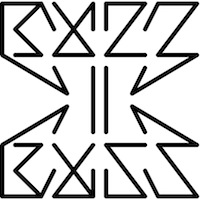
Buildings III: Martin Papcún vystavuje v Mnichově

Buildings III: Martin Papcún vystavuje v Mnichově.
MARTIN PAPCÚN
BUILDINGS III
5. února - 9. února 2014
ADBK Munchen
Akademiestraße 2 - 4
80799 München
Wed - Fri 2pm - 8pm
Sat - Sun 12am 8pm
Martin Papcún (1979) graduated on Akademie der Bildenden Kunste in
Munchen/ prof. Otto Kunzli (2009-2014) and he obtained M.F.A. in Academy of
Art, Architecture and Design in Prague in 2007. Large site-specific installations he realized was several times funded by CEC ArtsLink NYC, and The Rockefeller Foundation's NYC: *W 45tth,* (Cleveland, USA, 2009); *House, turned inside out, *(Cleveland, USA, 2009); *...We carry it on, *(New York, USA, 2013).
His work has been featured in numerous group exhibitions in countries including USA, South Korea, Italy, Germany, Czech Republic and Canada. His latest exhibitions include: Museum of Art and Design, New York (2014); Cheongju, South Korea (2013); Noel Guyomarc'h Gallery, Montreal (2013); Museum fur Angewandte Kunst Leipzig, Germany (2013), DOX - Centre of Contemporary Art, Prague, Czech Republic (2013), Gallery Baum, Heyri, Paju, South Korea (2013), via San Pietro, Padua, Italy (2013).
Martin Papcun explores private relationships with public spaces and the spaces we inhabit, in works both monumental and miniature. His work is continuously focused on relationships, definitions of private/ public space, and gaps between. Generally, the author examines the differences between communication systems (states, nations, subcultures and individuals) and their own language systematically interprets the broad
socio-political systems. Martin Papcun live and work in Munich.
"Buildinds III"
It is a cultural technique of mankind to depict three-dimensional objects in two dimensions and then in turn, to infer the three-dimensional object from its two-dimensional projection. In Martin Papcúns work "Buildings III" both types of representation mix up. The walls - open to top and bottom - are floor plans on their way to spatiality. The lines of a plan are drawn into the third dimension to become planes, while the newly created forms preserve the charme of a floor plan. The graphic abstraction contains treasure trove of information for those capable of reading them. Someone may even enjoy that. However, the lines of plans and maps hold already a beauty by themselves, and while studying them more closely, the imagination wanders off, wondering: What will be? The future and its inherent possibilities make plans so attractive.
The plans are unknown to the beholder of "Buildings III", he can explore them as something completely new. But Martin Papcún remembers by and with his pieces his earlier appartements, his former homes. Our own four walls are restrictions, but each restriction also provides orientation. Being orientated keeps grounded, whether one feels at home or not.
Martin Papcún treats his memories not literally: "Buildings III" are not miniaturized chambers. The rooms lack windows and doors, even floor and ceiling. They are just walls. Furthermore, the walls also oscillate between two states. Transformed from line to volume the walls remain filmy, the naturally massive and heavy silver becomes as thin as technically feasible. It is almost dissolving. Flaws in the material and lacerated edges
strenghten this impression. The metal´s surface is textured by saw marks and the planes are structured by lesenes, projections, niches and sometimes adjoining rooms. And even the colouring of the metal displaces the walls out of the material sphere: the pure silver objects are of a bright white with a lustrous glow, the patinated objects seem covered with hoarfrost.
These disappearing walls are subtly mounted on a delicate framework: they seem to float. The framework can, but does not necessarely need to be fixed on a separate closure for becoming a brooch. Consequently, "Buildings III" stand alone and are showcased without any formal detraction.
Due to the delicate construction and its vulnerable material, the objects are very fragile. And even the implied existence of space is volatile: it is just a hint, a perforated silversheet, that prevents it from merging with outer space. Therefore, "Buildings III" are defended by long rods, similar to lances, while at the same time, these spines complete the walls to elaborate sculptures.
Walls define inside and outside. They transform the enclosed into space. These architecture defining principles of separation and of duality of space and its cover are rarely seen in a more impressive way than in Martin Papcún´s work.
Text by Carla Mayerhofer, Art theorist





